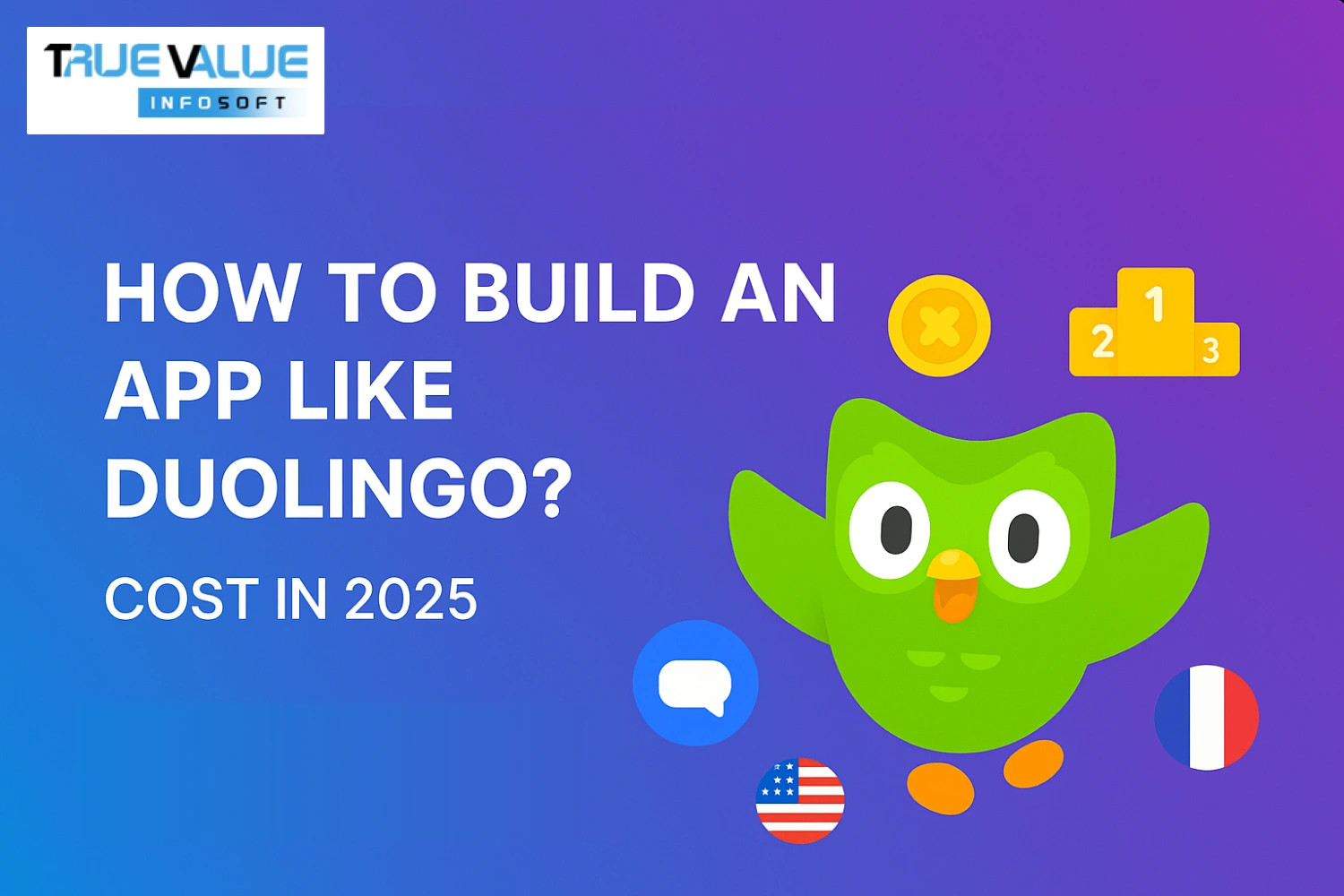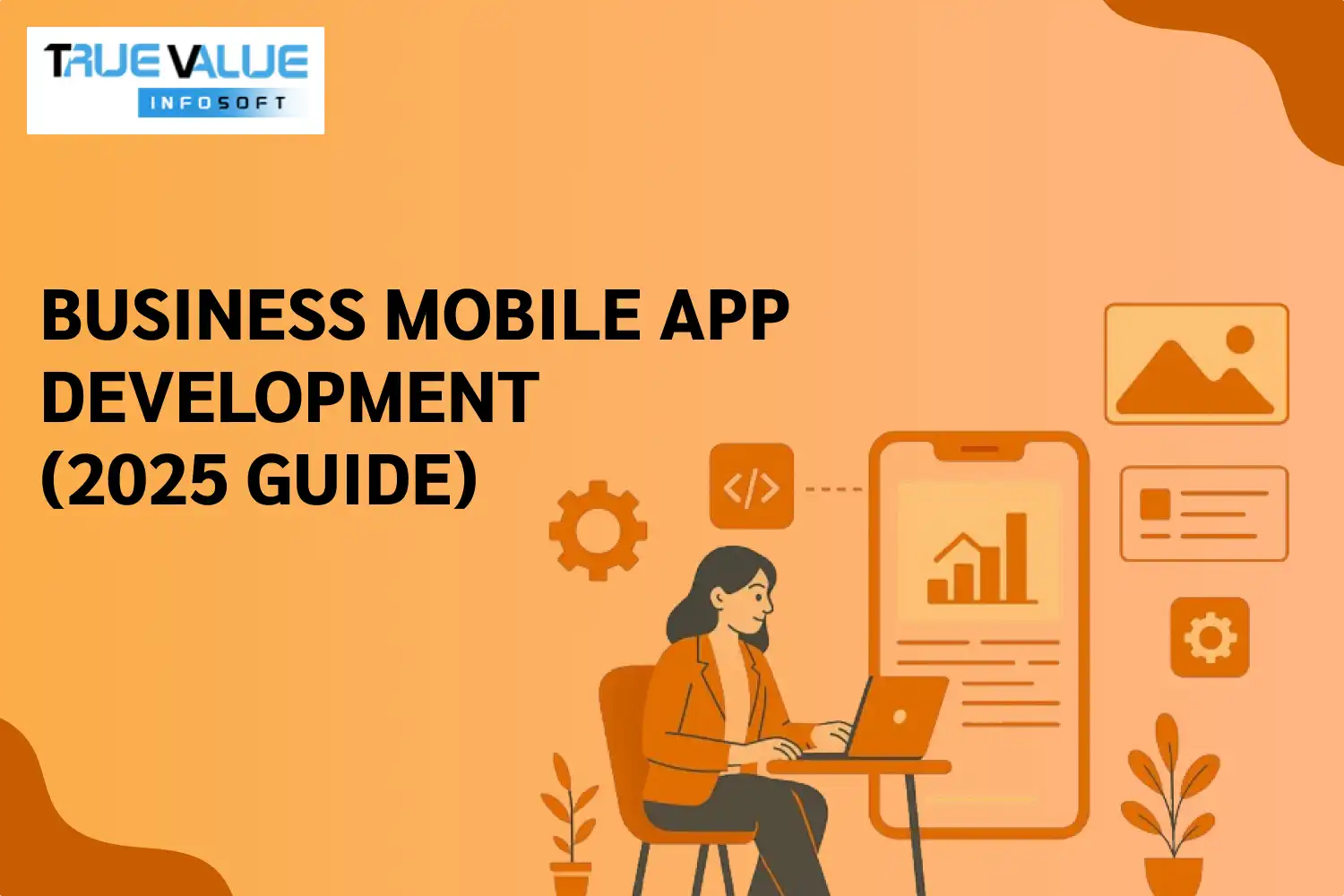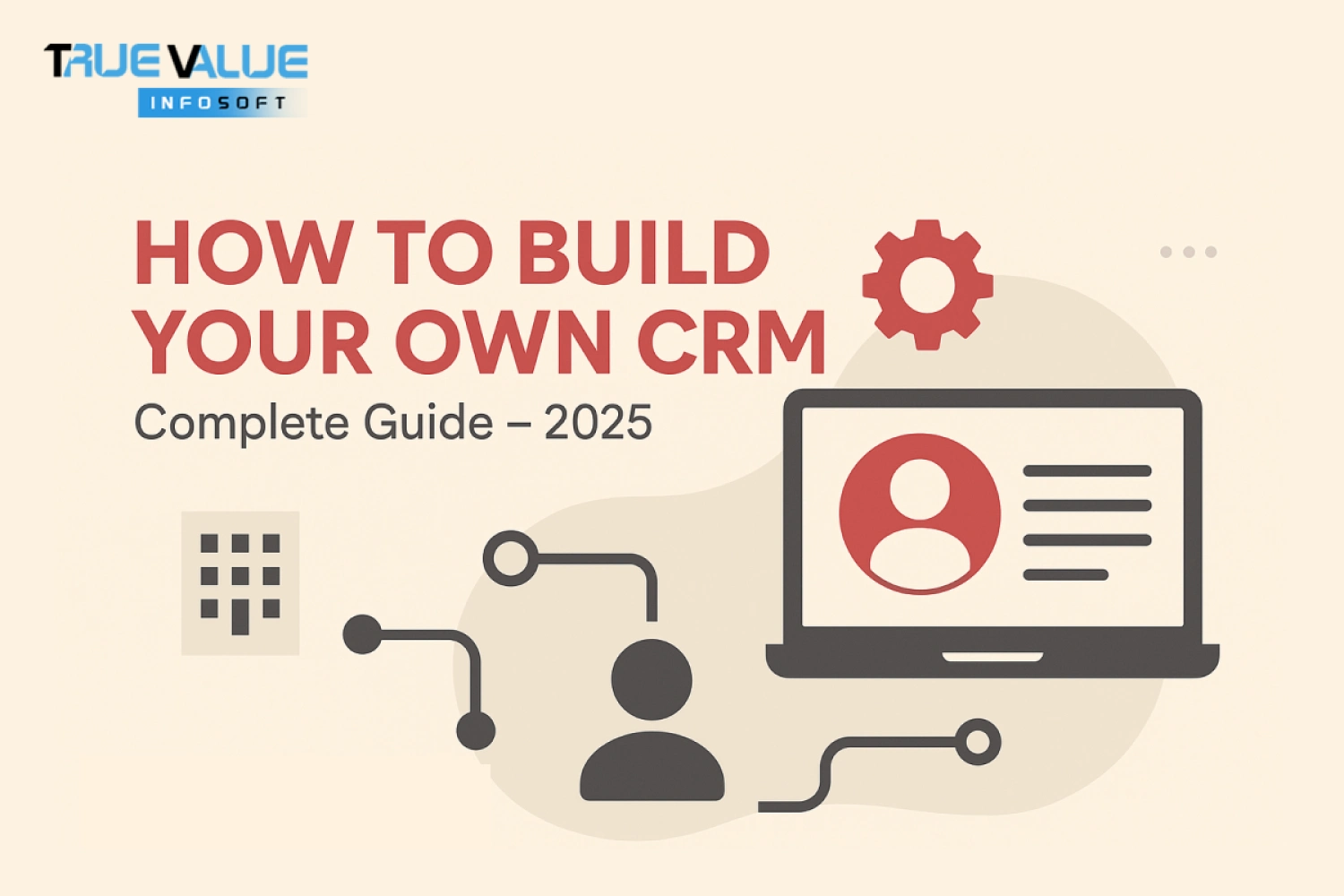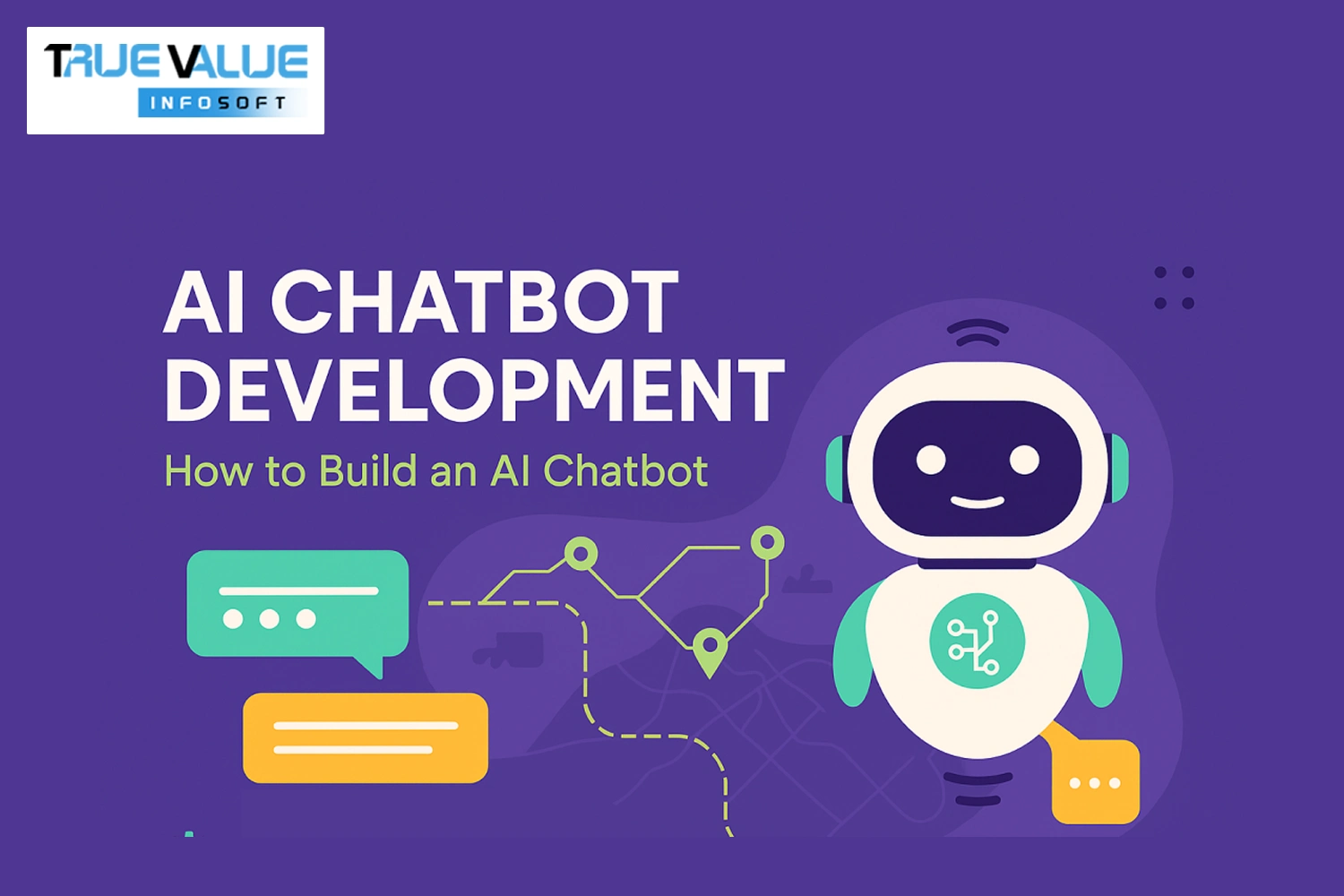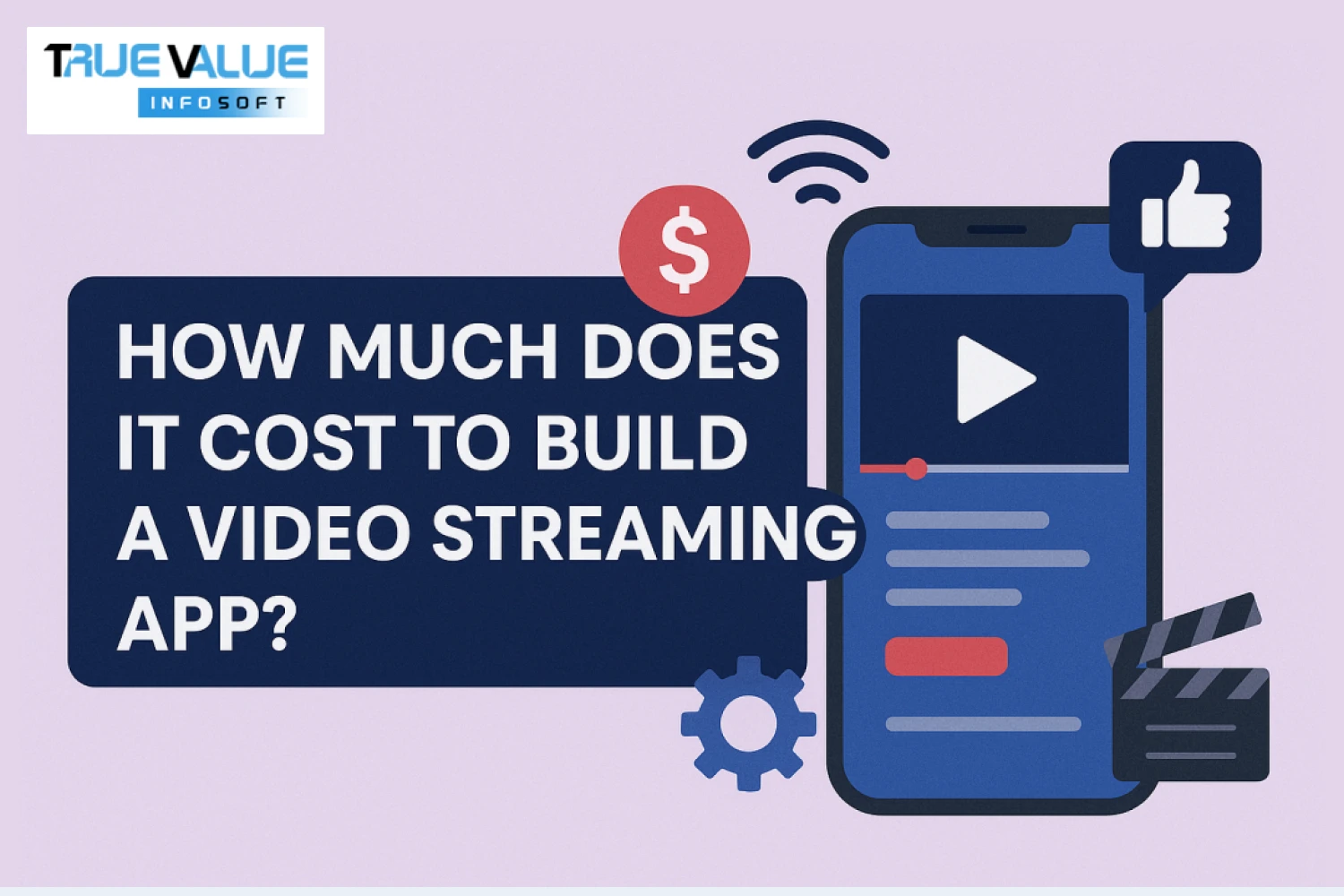Introduction
Are you thinking about building the next big language-learning app like Duolingo? With the rise of globalization, bilingual jobs, and remote work across countries, learning new languages has never been more in demand. Apps like Duolingo are dominating the edtech space, blending gamification, AI, and personalized learning to keep users engaged for hours. But how do you create an app with a similar impact, and more importantly, what would it cost in 2025?
Welcome to your complete guide on building a Duolingo-like app, brought to you by True Value Infosoft, mobile app development company in India.Our team of industry experts and experienced developers specializes in transforming your edtech ideas into real, scalable products. With extensive experience in building educational platforms powered by cutting-edge technologies like AI, machine learning, gamification engines, and user analytics, we are the ideal partner for your app development journey.
In this blog, we’ll break down the key features, development process, estimated cost, challenges, revenue models, and technologies you need to build a competitive language-learning app in 2025. Let’s dive into how to turn your idea into a successful educational app like Duolingo.
1. What is Duolingo?
Duolingo is a globally recognized language learning platform that offers gamified lessons in over 30 languages. The app's success lies in its addictive gameplay, intuitive user interface, and a blend of AI-driven personalization. With over 500 million downloads and a user base spanning every age group, Duolingo has revolutionized how people learn languages online.
Why Build a Language Learning App in 2025?
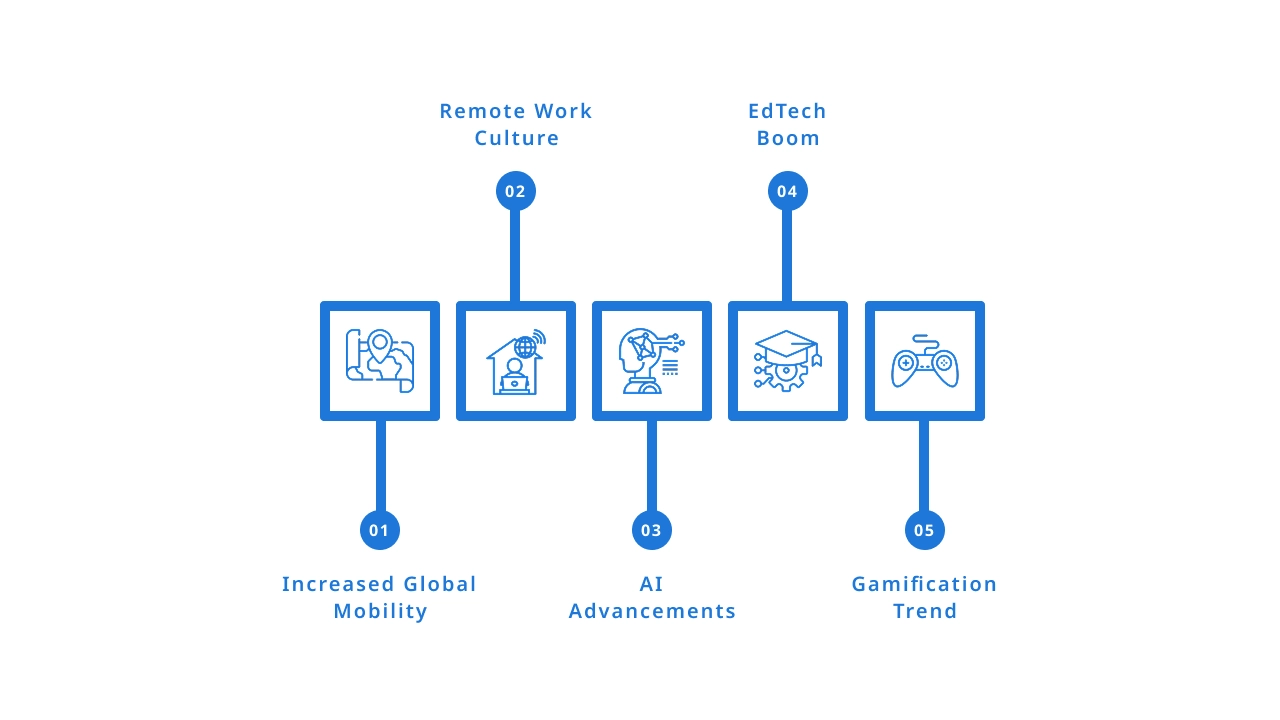
The year 2025 presents a unique opportunity for edtech businesses. Here’s why:
- Increased Global Mobility: More students and professionals are migrating across borders, creating demand for multilingual proficiency.
- Remote Work Culture: Cross-border collaboration is the norm, making language skills valuable.
- AI Advancements: New breakthroughs in AI and NLP are enabling more accurate, personalized, and interactive learning experiences.
- EdTech Boom: The global edtech market is expected to surpass $500 billion by 2025.
- Gamification Trend: Learning through play is proven to increase user retention and engagement.
Launching a language learning app now positions you perfectly to take advantage of these growing trends.
Key Features of a Duolingo-like App
To build an effective Duolingo clone, the app should offer the following must-have features:
User Features
- User Registration/Login (Email, Google, Social Media)
- Language Selection
- Interactive Lessons (Speaking, Listening, Writing, Reading)
- Daily Challenges and Quizzes
- Gamified XP System & Leaderboards
- Voice Recognition Integration
- Push Notifications & Streak Reminders
- Progress Tracking Dashboard
- Multilingual Support
- Offline Mode
- Achievements & Badges
Admin Features
- User Management
- Course Content Management
- Analytics Dashboard
- Monetization Settings
- Notification Management
Premium Features
- Ad-Free Learning
- Progress Syncing Across Devices
- Advanced Grammar Lessons
- Downloadable Content
- Real-Time Chat with Tutors
Technology Stack for a Language Learning App
The tech stack can determine scalability, performance, and cost. Here’s an optimal stack:
Frontend:
- Flutter or React Native– for cross-platform mobile app development
Backend:
- Node.js or Django – for fast and scalable APIs
Database:
- MongoDB / PostgreSQL– for storing user progress, lesson data
AI/ML:
- TensorFlow / OpenAI API– for language recommendation, grammar correction, and NLP processing
Voice Recognition:
- Google Cloud Speech-to-Text or Apple Speech API
Cloud & DevOps:
- AWS / Google Cloud Platform / Azure
Step-by-Step Process to Build a Duolingo Clone
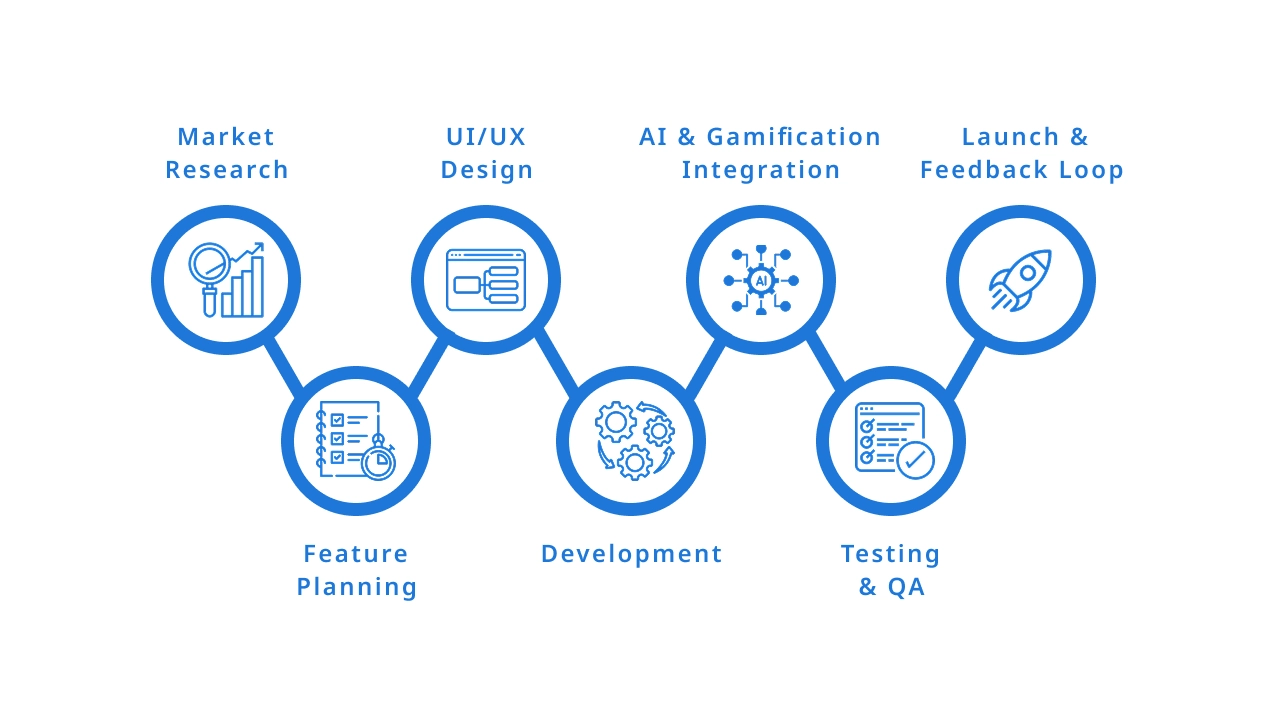
The year 2025 presents a unique opportunity for edtech businesses. Here’s why:
Step 1: Market Research
Analyze competitors like Babbel, Rosetta Stone, Memrise, etc. Identify what works and what’s missing.
Step 2: Feature Planning
Decide on your MVP (minimum viable product) features first, such as lesson modules, gamification, and user progress tracking.
Step 3: UI/UX Design
Create engaging designs with a focus on minimalism and interaction. Use tools like Figma or Adobe XD.
Step 4: Development
Build the backend architecture, connect APIs, and integrate front-end modules.
Step 5: AI & Gamification Integration
Use machine learning for personalized lesson recommendations and implement a reward-based system for better user engagement.
Step 6: Testing & QA
Conduct thorough testing for bugs, voice recognition errors, and UI responsiveness.
Step 7: Launch & Feedback Loop
Deploy the app to the Play Store and App Store. Gather user feedback and continuously improve.
AI and Gamification: The Secret Sauce
Duolingo’s success is heavily reliant on:
- Adaptive Learning: AI adjusts lesson difficulty based on user performance.
- Speech Recognition: AI evaluates pronunciation in real-time.
- Gamification: Points, leaderboards, and badges create a sense of achievement.
- NLP & Chatbots: Simulates conversations and provides grammar correction.
- Personalization Engines: Recommend daily tasks based on user history.
These can all be built using Python-based AI frameworks, custom scoring algorithms, and gamification engines
Monetization Models for Language Learning Apps
How can you make money with a Duolingo-like app?
- Freemium Model(Free lessons with ads + premium subscription)
- Ad-Based Revenue
- In-App Purchases (Badges, Extra Lessons)
- Certification Fees
- B2B Licenses for Schools and Institutions
- Affiliate Marketing for Language Materials
Estimated Cost to Develop a Duolingo-like App in 2025
The development cost for Vendor Management Software in 2025 depends on several factors such as features, technology stack, platforms, design complexity, and development team location. Here’s a breakdown:
| Phase | Estimated Cost (USD) |
|---|---|
| UI/UX Design | $5,000 – $8,000 |
| Backend Development | $10,000 – $15,000 |
| Frontend Development | $12,000 – $18,000 |
| AI Integration | $15,000 – $25,000 |
| Gamification Engine | $10,000 – $15,000 |
| Testing & QA | $5,000 – $8,000 |
| Deployment & Maintenance | $3,000 – $7,000 |
| Total Estimated Cost | $60,000 – $100,000+ |
Note: Costs vary depending on features, platform (Android/iOS), third-party integrations, and location of the development team.
Challenges in Building a Language Learning App
- Real-Time Voice Recognition Accuracy
- Gamification Balance
- Content Quality and Localization
- User Retention
- Data Privacy Regulations
- AI Bias and Misinterpretation
- Scalability During Rapid User Growth
True Value Infosoft can help mitigate these with proven development practices.
Why Choose True Value Infosoft for Building Your Duolingo-like App?
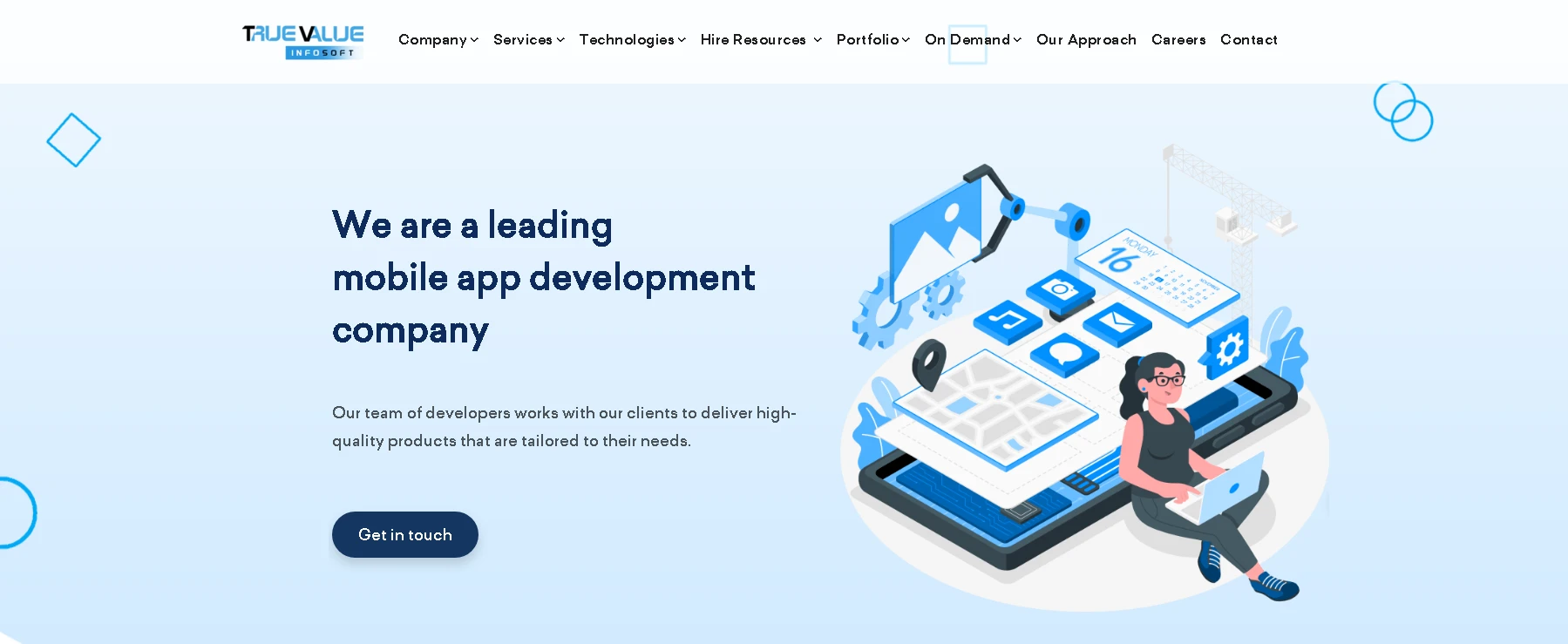
Here’s why we’re the bestApp Development Company for this project:
- Expertise in AI & EdTech
- Custom Gamification Solutions
- Agile Development Methodology
- Affordable Pricing with High Quality
- Dedicated Support & Maintenance
- User-Centric Design Philosophy
We bring a mix of technical expertise, educational psychology, and design aesthetics that ensures your app doesn’t just work—it thrives.
Conclusion
Creating a Duolingo-like language learning app in 2025 is not only possible—it’s a brilliant business idea in the booming edtech sector. With advancements in AI, mobile tech, and gamification, you can build an engaging, scalable platform for global learners. Whether you’re an edtech startup, educational institute, or entrepreneur with a passion for languages, now is the right time to invest.
And when you're ready to turn your vision into reality, True Value Infosoft is here to bring your ideas to life. With our experience, talent, and commitment to innovation, we help you create an app that stands out in the competitive edtech space.
FAQs
On average, it takes 4–6 months to develop a full-featured app, including design, development, AI integration, and testing.
A basic MVP version with core features might be possible under $50,000, but a scalable and AI-powered version usually starts at $60,000+.
You can add any language you want. Most apps start with popular ones like Spanish, French, German, and expand later.
No, you can use APIs like Google Cloud Speech or Apple’s native APIs, but customization may require backend processing.
We offer cost-effective, high-quality app development services with deep expertise in AI, gamification, and edtech product development.
